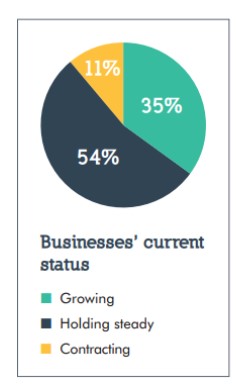Manufacturing Businesses, Not Only GE, Being Courted to Move As Fewer Praise CT's Quality of Life
/Connecticut’s state government has been working diligently to boost manufacturing and manufacturers in the state, but the latest statewide survey suggests there remain significant obstacles on the road to realizing the goal of growing and sustaining a vibrant manufacturing sector.
Among manufacturers, 94 percent handle their production in Connecticut, according to the just-released 2015 Survey of Connecticut Businesses by the Connecticut Business and Industry Association and BlumShapiro. While the survey analysis describes that number as encouraging, it also notes that 28% have production facilities in other parts of the U.S., and 24% in other countries—“which means they may be more likely to consider expanding or shifting more of their production elsewhere.”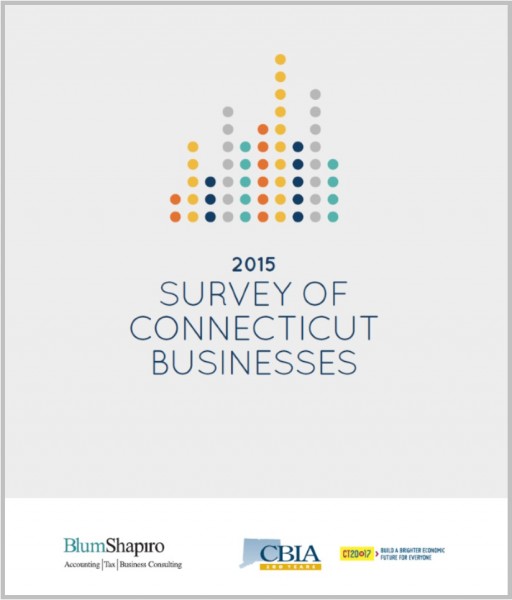
The report indicates that the “factors that drive site location include access to key inputs; proximity to suppliers and customers; access to skilled labor; cost of labor; occupancy costs; affordable energy; and where companies are in their life cycle (e.g., mature companies are often likely to disperse geographically to reduce costs).
Although the courting by Governors from across the nation of General Electric’s corporate management has garnered much media and political attention, it is certainly not the only company that is the subject of someone else’s attention. The CBIA-BlumShapiro report said that one in three businesses surveyed have been approached about moving or expanding their operations to another state.
Of those, the analysis continued, “nearly one in four are planning on moving to that state, 29 percent are considering shifting significant production to another state within five years, and 31 percent are weighing expansion in another state within five years.
Although the report shows that 63 percent of businesses surveyed showed a profit this past year—the best this survey has seen since 2006 - the report indicated that “a primary area of concern” is the expansion of businesses over the next five years, and whether that expansion will take place in Connecticut or elsewhere.
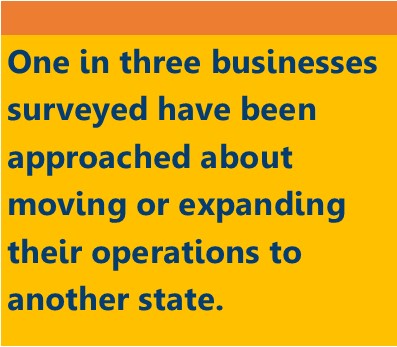 Whether perception drives reality or reality is drives perception, the opinions stated by business surveyed are less than encouraging, according to the report. Primary reasons cited for moving or expanding outside Connecticut are the state’s high costs (including taxes) and its “anti-competitive business environment,” reflecting an oft-stated CBIA viewpoint. More than three-quarters say Connecticut’s business climate is subpar compared with other states in the Northeast, and the nation.
Whether perception drives reality or reality is drives perception, the opinions stated by business surveyed are less than encouraging, according to the report. Primary reasons cited for moving or expanding outside Connecticut are the state’s high costs (including taxes) and its “anti-competitive business environment,” reflecting an oft-stated CBIA viewpoint. More than three-quarters say Connecticut’s business climate is subpar compared with other states in the Northeast, and the nation.
The report also noted the significant number of state companies that depend on other Connecticut businesses. “The vast majority of companies surveyed (70 percent) are somewhat or highly dependent on larger Connecticut companies or businesses,” the analysis highlighted, “which raises concerns when tax hikes threaten to push large companies out of state.”
CBIA’s surveys consistently find that personal reasons also factor significantly in location decisions. “Many business leaders point to Connecticut’s quality of life and the desire to work close to where they live as the main reason for locating and/or staying in-state. However, we are slipping here,” the report said.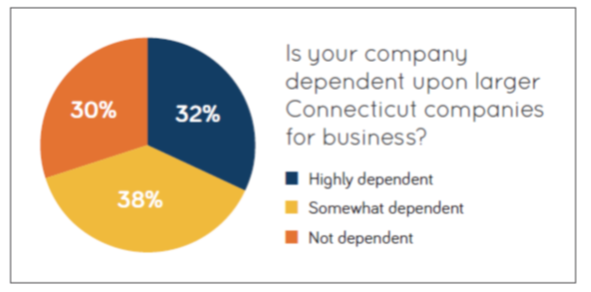
In a survey of Hartford-New Haven-Springfield businesses conducted earlier this year, quality of life—traditionally the number-one benefit to operating a business in this region— surprisingly emerged as less of a competitive advantage today. In fact, there has been a steady decline in the percentage of company leaders citing quality of life as the greatest benefit of operating a business here: 47 percent in 2009, 43 percent in 2011, 40 percent in 2013, and just over a third (35 percent) in 2015.




 “With more than 540 firms participating in the IPA annual Survey and Analysis of Firms this year, along with many CPA firm associations contributing to the search to identify the IPA 200, this (is) the definitive ranking of the nation’s largest public accounting firms,” said Kelly Platt, principal of The Platt Group, the publisher of IPA.
“With more than 540 firms participating in the IPA annual Survey and Analysis of Firms this year, along with many CPA firm associations contributing to the search to identify the IPA 200, this (is) the definitive ranking of the nation’s largest public accounting firms,” said Kelly Platt, principal of The Platt Group, the publisher of IPA. mong the industry trends cited by the publication are tighter margins, leadership changes, globalization, new regulations, acquisition pressures, evolving technology, cultural shifts, fierce competition, and commoditization of services (firms struggling to differentiate in the marketplace).
mong the industry trends cited by the publication are tighter margins, leadership changes, globalization, new regulations, acquisition pressures, evolving technology, cultural shifts, fierce competition, and commoditization of services (firms struggling to differentiate in the marketplace).
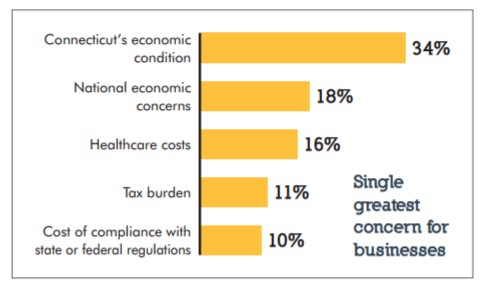 When asked how Connecticut should address the shortage of skilled workers, 32% of businesses surveyed say the state should reduce the cost of living, 28% say the state should support trade schools, 20% say the state should support education overall, and 20% say there should be incentive for training programs.
When asked how Connecticut should address the shortage of skilled workers, 32% of businesses surveyed say the state should reduce the cost of living, 28% say the state should support trade schools, 20% say the state should support education overall, and 20% say there should be incentive for training programs.